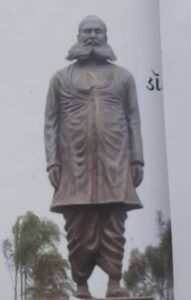Published on: March 9, 2022
PAL-DADHVAV KILLINGS
PAL-DADHVAV KILLINGS
NEWS
On March 7, the Gujarat government marked 100 years of the Pal-Dadhvav killings
DETAILS
- Took place on March 7, 1922, in the Pal-Chitariya and Dadhvaav villages of Sabarkantha district, then part of Idar state.
- The day was Amalki Ekadashi, which falls just before Holi, a major festival for tribals.
- Villagers from Pal, Dadhvav, and Chitariya had gathered on the banks of river Heir as part of the ‘Eki movement’, led by one Motilal Tejawat. The movement was to protest against the land revenue tax (lagaan) imposed on the peasants by the British and feudal lords.
- Tejawat, who belonged to Koliyari village in the Mewad region of Rajasthan, had also mobilised Bhils from Kotda Chhavni, Sirohi, and Danta to participate.
- Tejawat had been outlawed by the Udaipur state, which had announced a Rs-500 reward on his head.
- The Mewad Bhil Corps (MBC), a paramilitary force raised by the British that was on the lookout for Tejawat, heard of this gathering and reached the spot.
- On a command from Tejawat, nearly 2000 Bhils raised their bows and arrows and shouted in unison- ‘We will not pay the tax’
- The MBC commanding officer, HG Sutton, ordered his men to fire upon them. Bullets rained on them but where could they go? There was a stampede.”
- Nearly 1,000 tribals (Bhils) fell to bullets
- Tejawat was shot at twice, but was taken to safety by the villagers on a camel. He later “returned to the spot to christen it ‘Veerbhumi’.”
- While the British claimed some 22 people were killed, the Bhils believe 1,200-1,500 of them died.
- In the Jallianwala Bagh massacre of April 13, 1919, 500-1,000 people are said to have been killed after General Reginald Edward Dyer’s forces opened fire on peaceful protesters.

